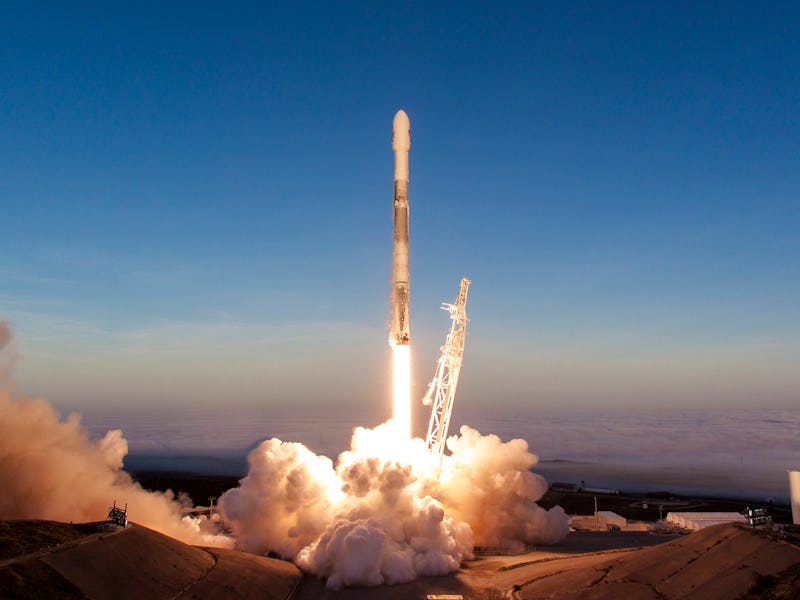SpaceX cut short its Falcon 9 rocket liftoff livestream on March 30 because it lacked the proper licenses to use onboard cameras. On Wednesday, it emerged that the company never had the correct licenses for previous launches — an issue that nobody spotted because the National Oceanic and Atmospheric Administration’s Commercial Remote Sensing Regulatory Affairs office is “extremely small,” according to director Tahara Dawkins.
The news is a surprising turn of events for SpaceX, which has attracted large numbers of viewers to its spectacular livestreamed launches. Dawkins told SpaceNews that no previous launches had comemrcial remote sensing licenses, required for launches like the fifth Iridium mission carrying 10 satellites. Launches like the April 2 launch of the CRS-14 Dragon capsule are exempt because they’re considered government missions. SpaceX only filed for a license four days prior to its latest launch, and a source told the publication that it did so after the administration clarified that its upper stage cameras count as a remote sensing space system.
Tesla "Starman"
Exactly why this has only just become an issue is unclear, but it comes soon after SpaceX’s Falcon Heavy launch. That mission saw the world’s largest rocket liftoff with a Tesla Roadster on February 6, with viewers tuning in to look at the car with its “starman” dummy in the driver’s seat make history. The use of cameras on that mission captured people’s imagination and brought new-found publicity to SpaceX’s livestreams.
“The National and Commercial Space Program Act requires a commercial remote sensing license for companies having the capacity to take an image of Earth while on orbit,” the administration said in a statement. “Now that launch companies are putting video cameras on stage 2 rockets that reach an on-orbit status, all such launches will be held to the requirements of the law and its conditions.”
Fortunately, SpaceX won’t have to wait too long to get its license cleared. The administration has significantly decreased its average review time from 210 days in 2015 down to just 91 days in 2017.
“Starman” may have looked cool, but he could have also flagged up regulatory issues.
